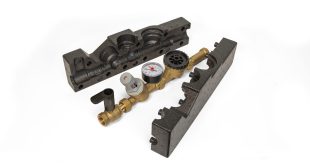So I looked, and behold, a pale horse.
And the name of him who sat on it was Death,
The four horsemen of the Apocalypse – aka Chris Smith, Ed Miliband, David Cameron and Eric Pickles – are bestriding the flooded plains. What amounts to a new sea is settling in on the Somerset Levels. There are landslips everywhere. The Tory heartland of the Thames Valley is under two foot of water. The West Country is all but cut off via rail, and a 15ft hole has appeared in the middle of the M2. If this isn’t the End of Days then it’s certainly looking increasingly shaky out there.
As I write this, there is a storm warning of gale force winds, inches of rain and snow for the entire UK, with the possible exception of the Orkneys.
What’s incredible is how long this has been going on. The Prime Minister was wading through the flooded village of Yalding just after Christmas and it’s still raining in mid-February.
We have had floods like this before and they have left devastation in their wake as they are doing now: Towyn, Tewkesbury, Cumbria, Worcester, Gloucester, Yalding, the list goes on and on. And we will have them again. And again.
Obviously, this isn’t the End of Days, whatever the drama queen in me might say. What it is though, is part of a cycle of climate change that we are just going to have to get used to. There was a chap from the Centre for Ecology and Hydrology speaking to the BBC News yesterday about bore holes and aquifers and water table levels. All of which are far, far higher than they should normally be.
But here’s a thought. The last time I saw someone from the Centre for Ecology and Hydrology they were speaking at the Bathroom Manufacturer’s Association Conference in 2006 (I think). The presentation was full of photographs of dried-up river-beds, reservoirs that were at less than half capacity and statistics like East Anglia has had less rainfall in the last year than the Sahara.
Two years ago, the southeast hosepipe ban came into effect the day that it started raining and didn’t stop all summer. It’s not the wet summers that are the problem when we have droughts, it’s the dry winters when the reservoirs don’t get filled up. Not likely to be a problem this time round. Never the less, we will see their like again.
The Environment Agency must shoulder some of the blame for the problems we are seeing now. So must successive governments for not funding it properly over the years. Dredging of the rivers in Somerset stopped long before the Coalition’s cuts. For centuries, people living near inland waterways have understood that they occasionally need to be cleared or they fill up with sludge, dead animals, plant matter etc and lose their capacity to hold and transport water.
Those people also understood that you don’t live too close to the rivers and lakes for the very good reason that these things tend to flood from time to time. So, planning authorities and builders also have to accept that, if you are going to build on or near flood plains, then you have to invest in defences against those occasional floods.
In the long term, much of this awful weather will end up being good for the industry with plenty of renovation, refurbishment and general repair being required. What’s concerning in the short term is that none of this can happen while so much of the country is underwater. And there’s going to be precious little new building happening while every time you dig a hole for the groundworks, it gets filled with water.
We’ve been through enough in the past few years. It would be nice to think that the recovery could really take hold without being drowned as it gets going.
 Builders Merchants Journal – BMJ Publishing to Builders Merchants and the UK merchanting industry for more than 95 years
Builders Merchants Journal – BMJ Publishing to Builders Merchants and the UK merchanting industry for more than 95 years



